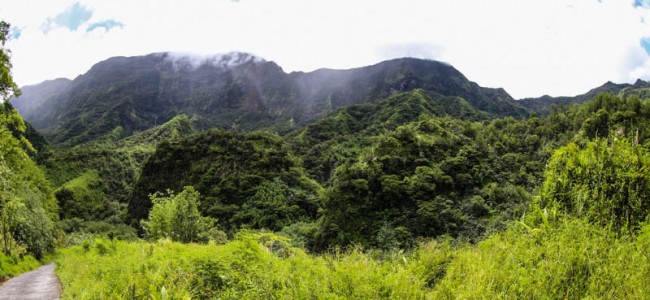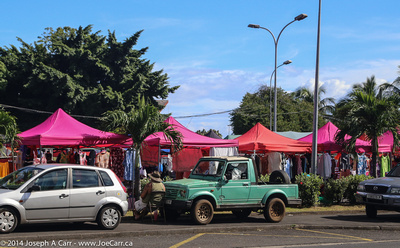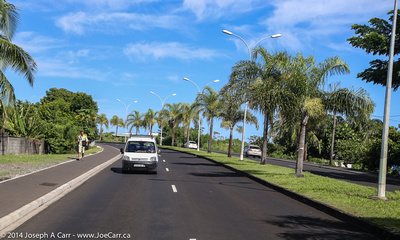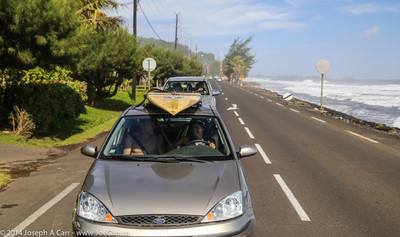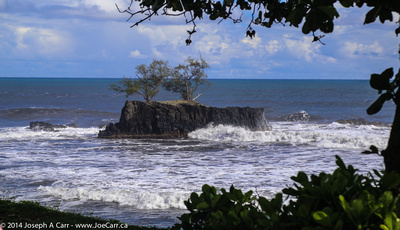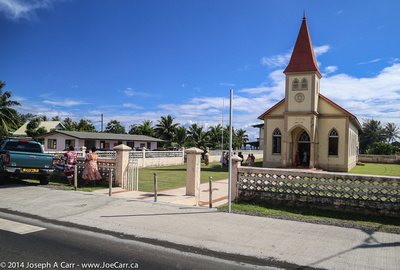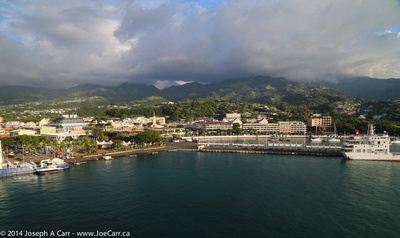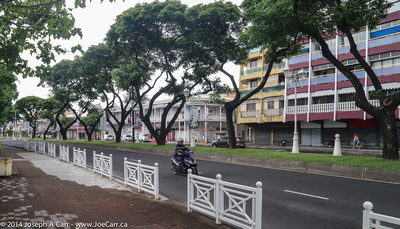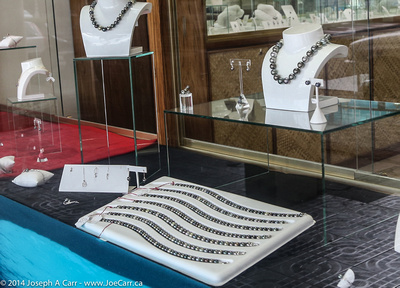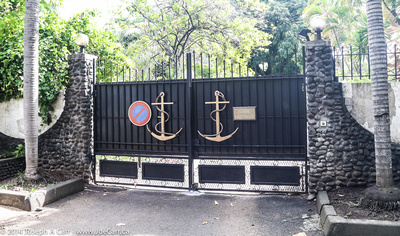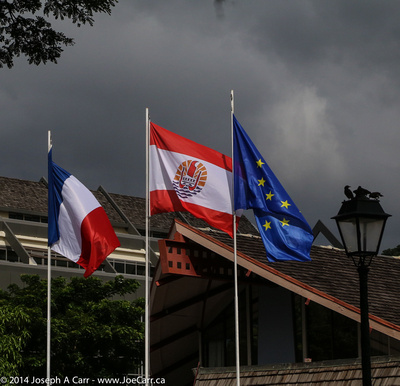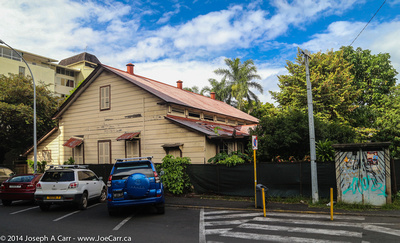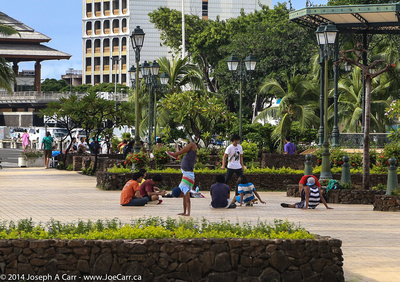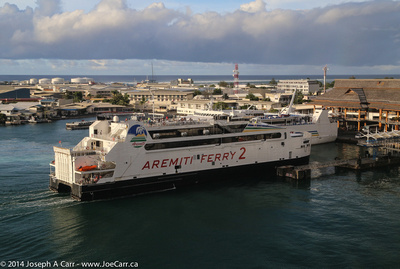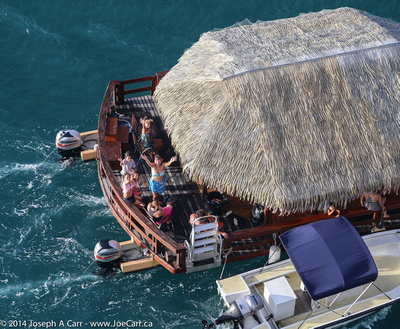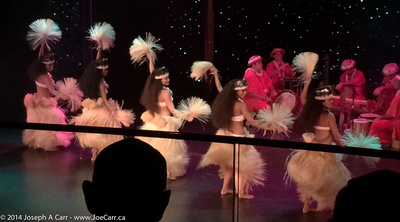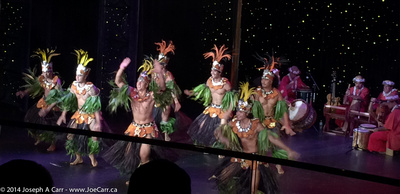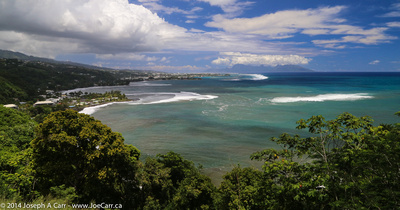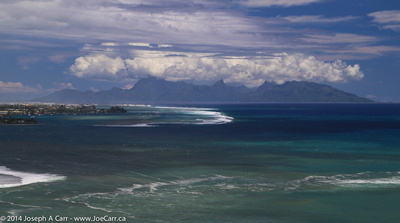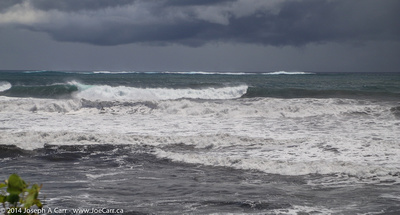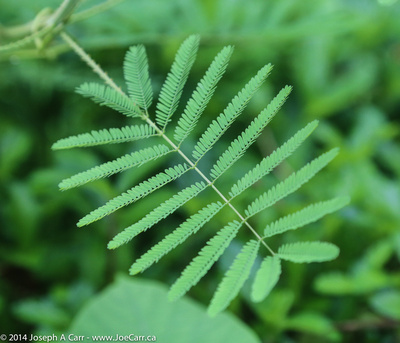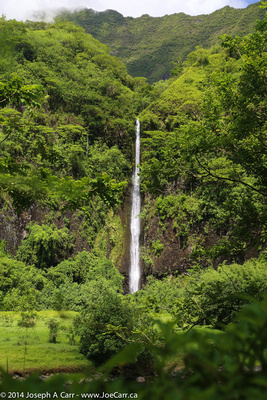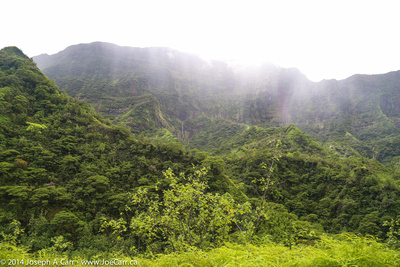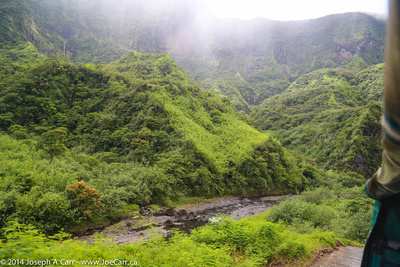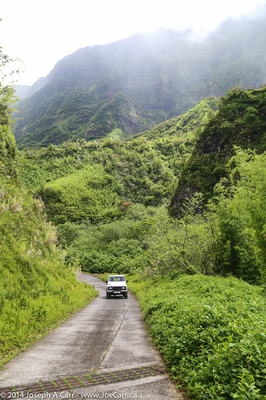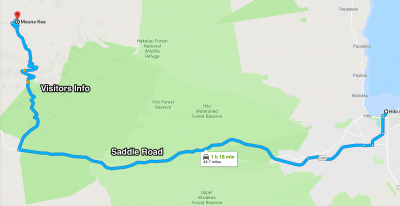2014 Hawai’i-French Polynesia cruise
March 5, 2014 – Wednesday – Tahiti, French Polynesia
My excursion this morning is called Off the Beaten Track: Tahiti by 4-Wheel Drive, which is another tour using 4X4 trucks, but this time to explore the interior of Tahiti. We drive along the north coast of Tahiti from Papeete to the Papenoo Valley, and then head inland up to the base of one of the volcano calderas, now covered in lush tropical vegetation, with a river and waterfalls. The river is used for hydropower generation, although the dams, reservoirs and power stations are very small by British Columbia standards. We return using the same route, marvelling at the huge rough surf crashing on the rocks and shoreline. Our final stop is at an outlook over Mataval Bay and its black beach, with the capital of Papeete and island of Moorea behind.
After lunch, I venture out to walk around Papeete for a few blocks. Everything is closed today, since it is Ash Wednesday (and Missionary Day), both a civic and religious holiday. There are a few restaurants open and a few tourist shops, but otherwise the city is closed for the day. The Vaima Shopping Center was newly opened when I was here in 1978, but it is closed for the holiday like most other retail. The afternoon heat is a killer, so I return to the air-conditioned ship.
This evening there is a special folkloric Tahitian dance troupe the Showroom aboard ship: Tahiti Ora. They are top-notch, high-energy performers, and the room is packed for their single performance. After the show, the rain is pouring down outside. We have been incredibly lucky during out time in French Polynesia, since this is their rainy season. We seem to have been perpetually a day ahead of serious-looking rainstorms. See my photos of our scenic cruise along Raiatea and Taha’a for some major clouds and even a funnel cloud!
